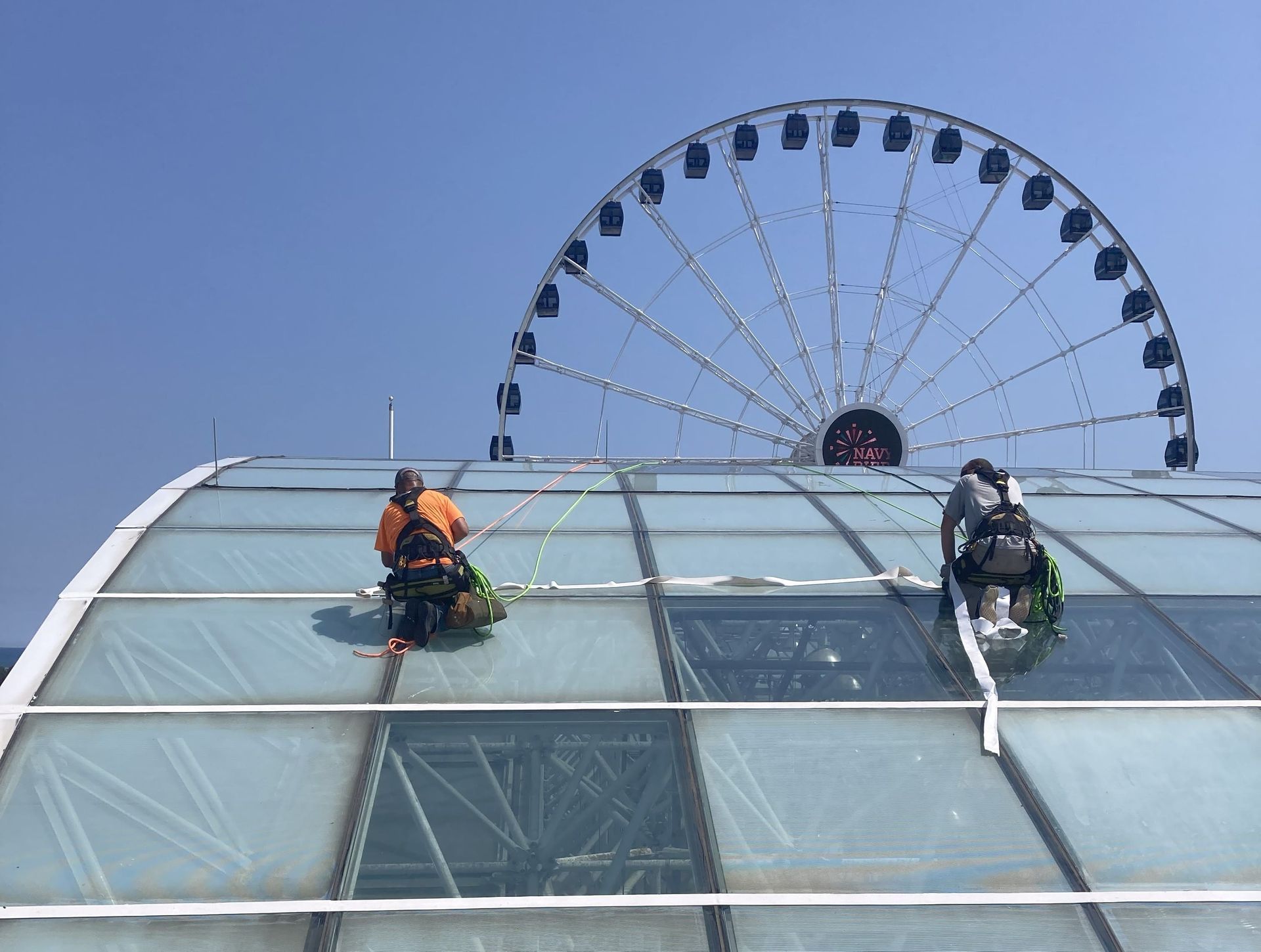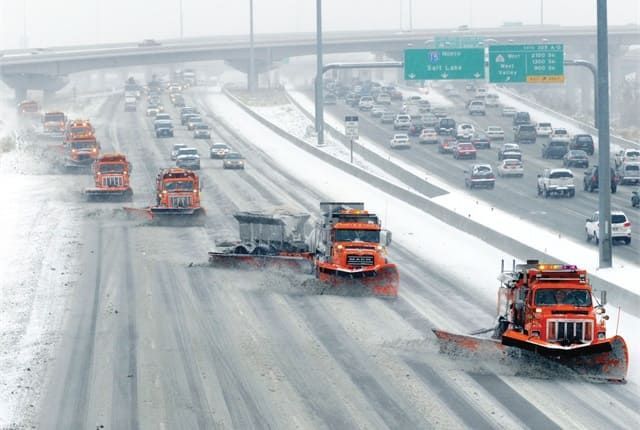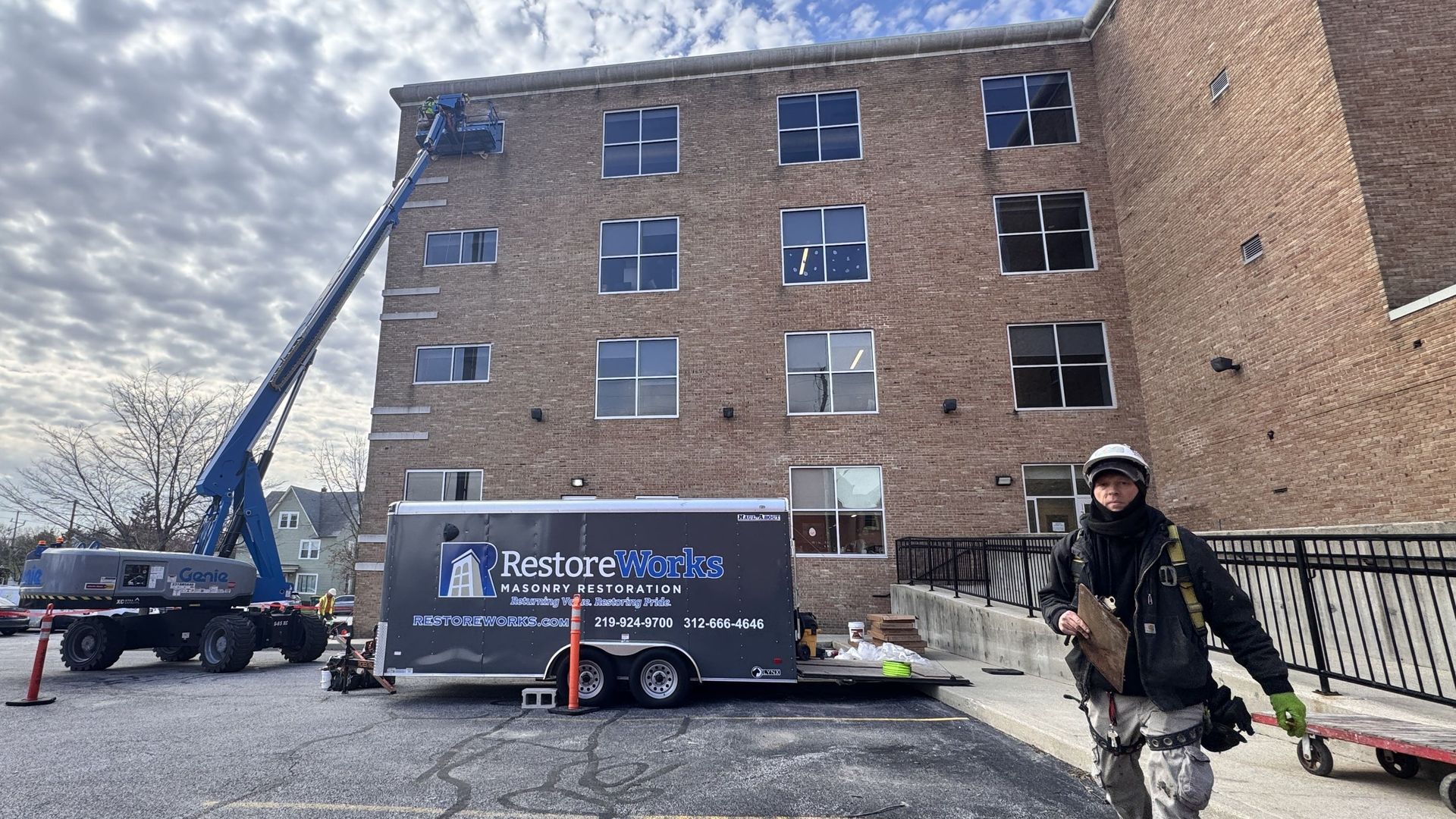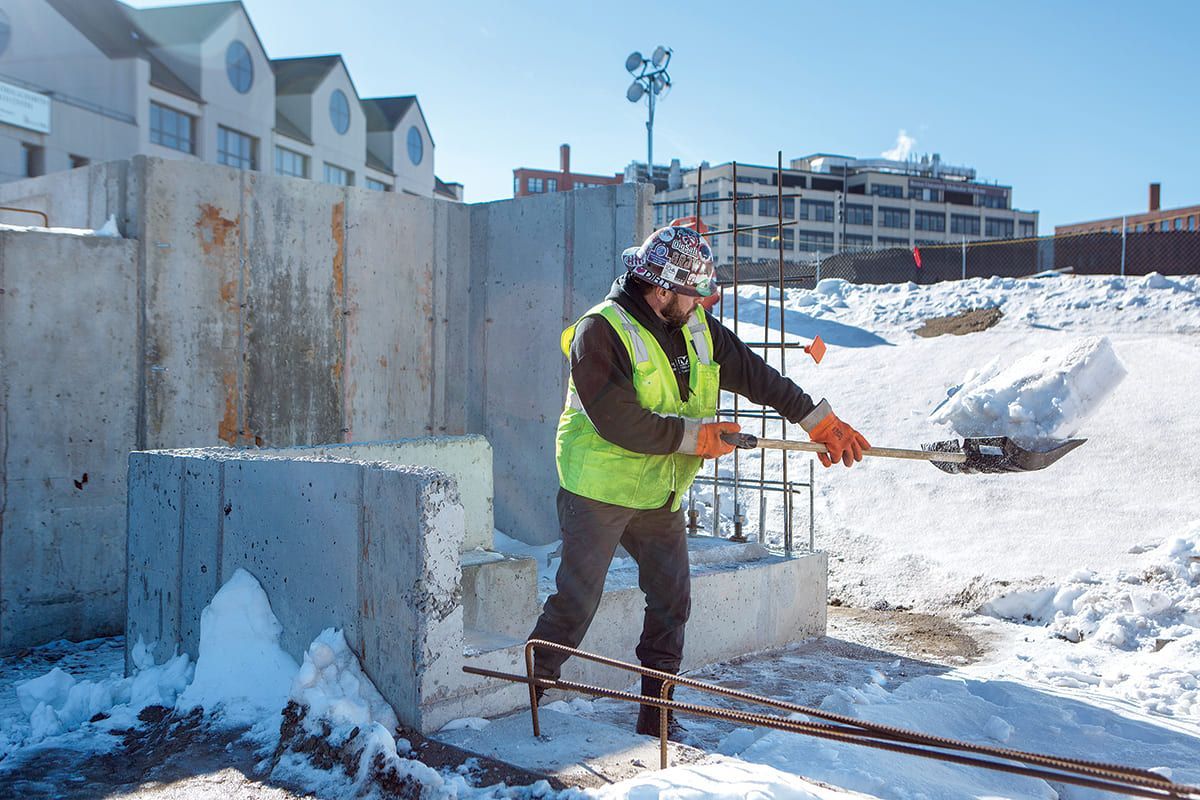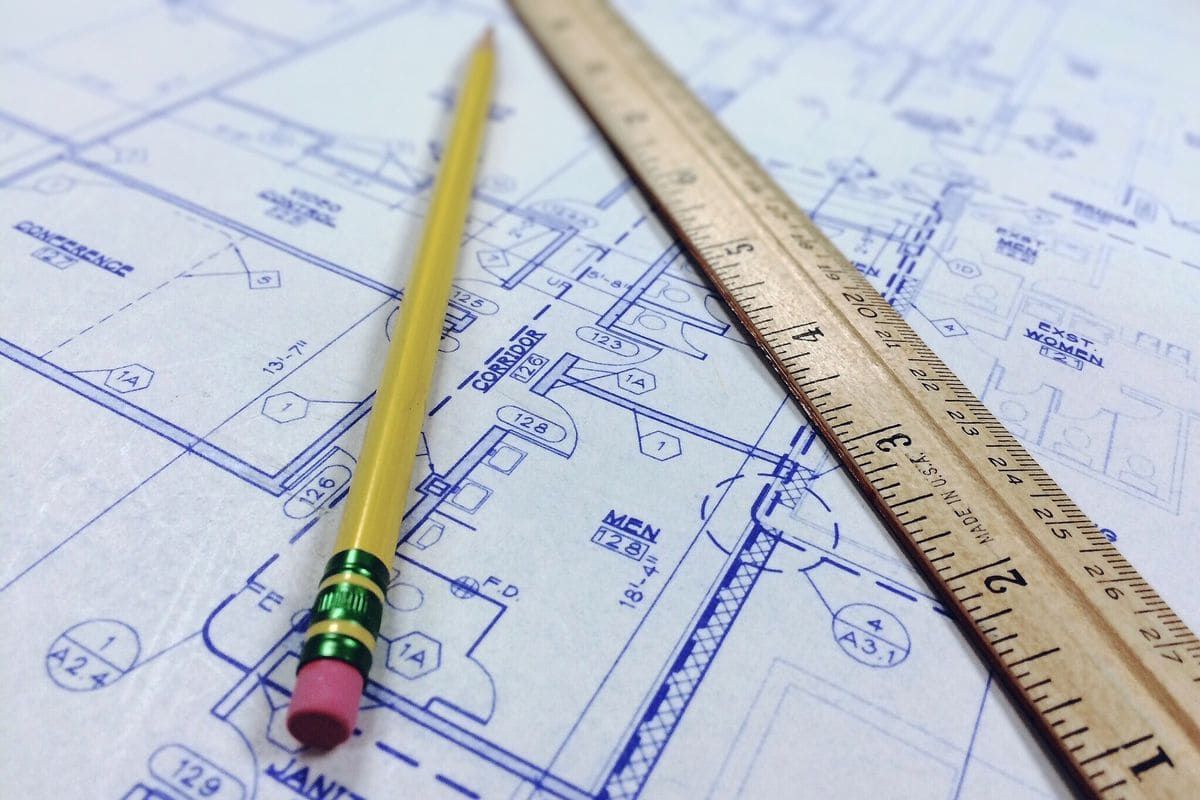Masonry structures are known for their durability and aesthetic appeal. However, without proper maintenance and environmental controls, even the most robust masonry can deteriorate over time. One often-overlooked factor in maintaining masonry health is ventilation. Whether you’re currently managing a commercial masonry restoration or planning a new one, understanding the role of ventilation is important to extending the life of masonry.
Why Ventilation Matters in Masonry Preservation
Masonry materials like brick, stone, and mortar are porous by nature, allowing them to absorb and release moisture. When water is trapped in masonry, it can lead to severe problems, including:
- Freeze-thaw damage in colder climates like Chicago’s, where water expands upon freezing.
- Efflorescence, the unsightly white powdery residue caused by dissolved salts.
- Accelerated mortar degradation, compromising the structural strength of your façade.
Proper ventilation ensures that moisture does not linger within your masonry. Reducing these risks helps your building maintain its appearance and functional value.
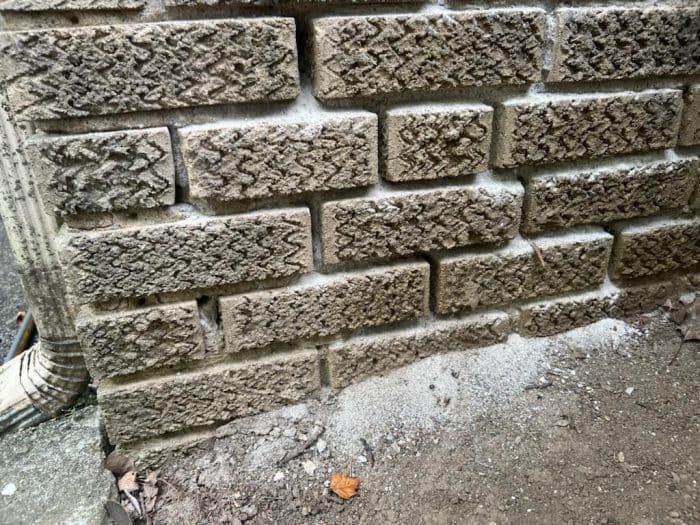
The Mechanics of Masonry Ventilation
Ventilation in masonry isn’t about direct airflow like an HVAC system. Instead, it involves strategies to encourage moisture evaporation and prevent water intrusion. Some common techniques include:
#1. Weep Holes
These small openings at the bottom of walls allow water that has entered the cavity to drain out, preventing moisture buildup. However, clogged or poorly designed weep holes can cause more harm than good.
#2. Ventilated Cavity Walls
According to the
International Masonry Institute, ventilated masonry cavity walls provide a robust solution for moisture management. The cavity acts as a drainage plane, allowing water that penetrates the outer masonry layer to escape without reaching the structural wall. Ventilation at the top and bottom of the cavity facilitates air circulation, speeding up the drying process. This technique not only reduces the risk of efflorescence and freeze-thaw damage but also enhances thermal performance by reducing trapped moisture.
#3. Masonry Sealants and Coatings
Sealants can help reduce water absorption while allowing vapor to escape. For a project like
commercial concrete façade repair, the right breathable sealant can make all the difference.
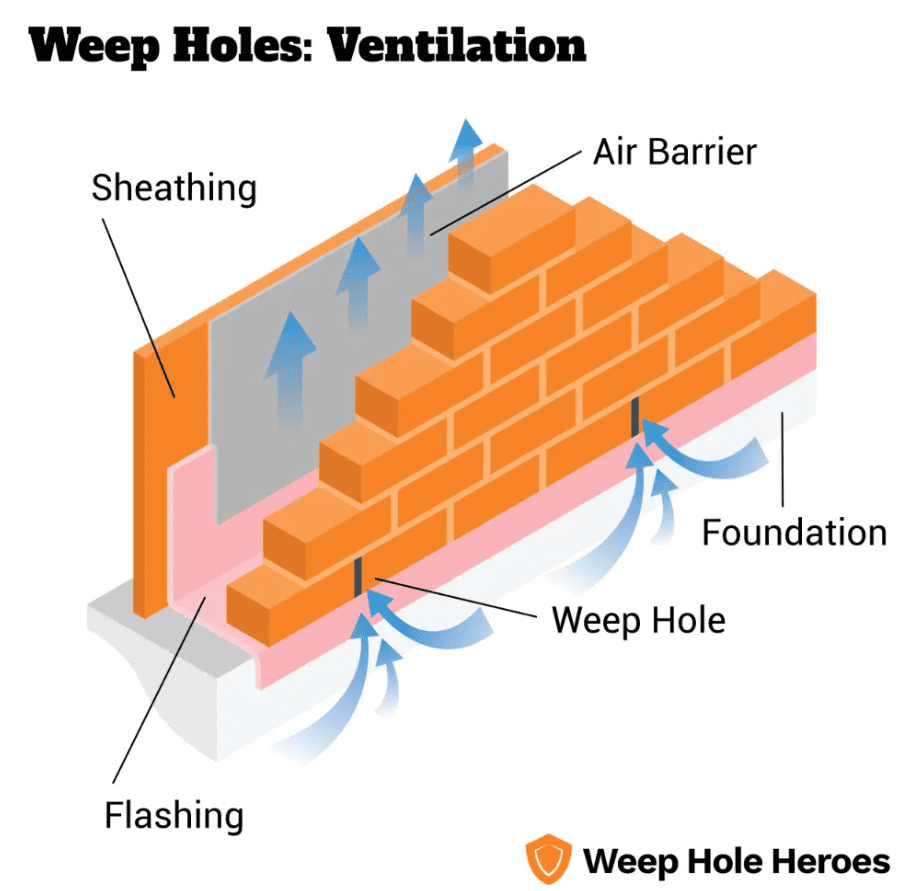
Signs of Poor Ventilation in Masonry
If a masonry structure lacks proper ventilation, some common symptoms include:
- Cracked or spalling bricks.
- Persistent damp patches on walls, even in dry weather.
- Mold growth, especially on the interior side of walls.
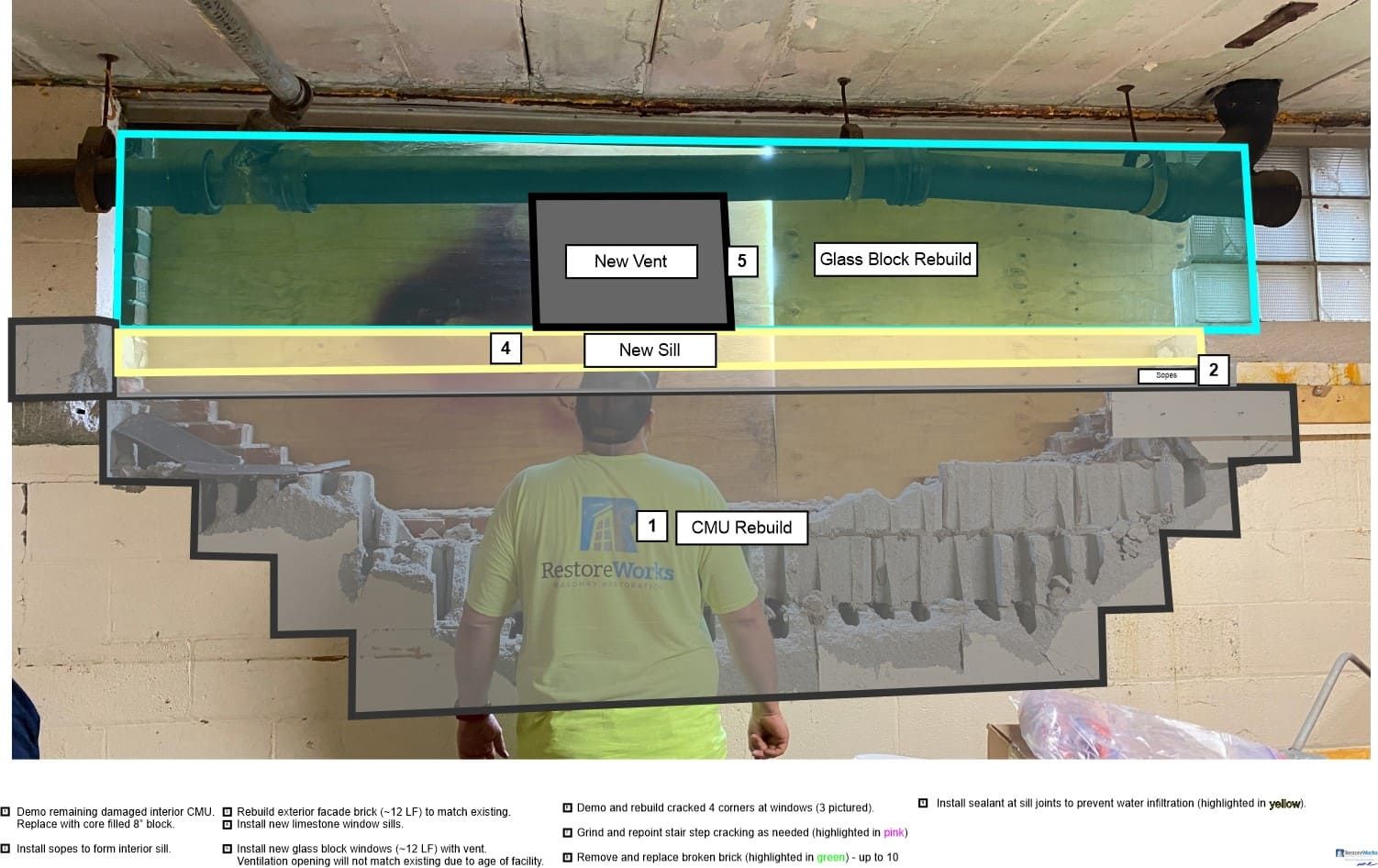
The Cost of Ignoring Ventilation
Ignoring ventilation issues in masonry can lead to costly repairs down the road. According to Buildings, commercial property owners in the United States spend an estimated $2.4 billion annually on remediation of buildings due to moisture-related issues. For those managing commercial masonry restoration projects, preventive measures like proper ventilation are an investment in the long-term integrity of your building.
How RestoreWorks Can Help
At RestoreWorks, we specialize in masonry restoration in Chicago, offering services to address issues like moisture management, structural deterioration, and façade damage.
Don’t wait for small issues to become big problems. Contact us today to discuss your restoration needs and ensure your masonry remains protected for years to come.


